15 Surprising Facts About the History of Fast Food
In America alone, the number of fast food stores littered throughout the
country is a whopping 232,611 strong. Spending on advertising alone for fast
food was a staggering $4.6 billion in 2012. Advertising expenses for consumer
behavior involving the consumption of fruits and vegetables only came out to
$116 million. There is an ominous disconnect between what the youth of this
country are being told and what really are
nutritious meal choices. Fast food companies are famous for their marketing
process which, through the implied subtext of their advertising campaigns,
target America's youth. Many of America's obesity problems and mounting health
care expenses are directly linked to a policy of misinformation.
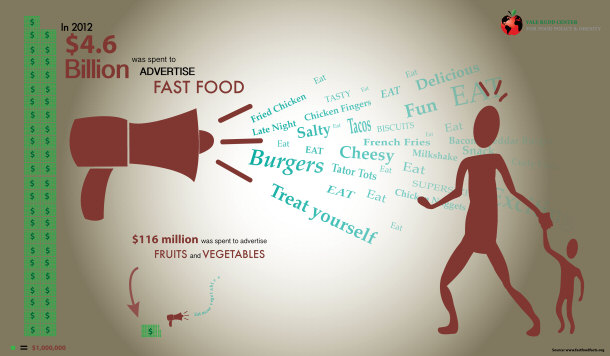
Some Americans perceive meals like pizza, hamburgers and fries, or Taco Bell
as proper meal choices. After having a diet consisting of toxic foods full of
preservatives, unfortunately most people get used to the crummy way they feel.
This is one of the most damaging aspects of fast food on the American people
because people could have lives that are fuller, less stressful, and without the
growing dependence many Americans have on prescription drugs.
Jr. Deluxe Burger from Sonic
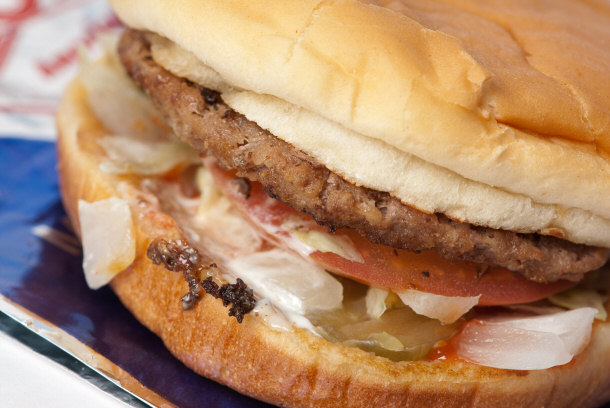
Since the beginning of the industry way back in the early 1900s, fast food
has become a fundamental part of American and Western culture. Its immersion
into American culture has even led to "Rock & Roll" Exhibit that is operated in
conjunction with a McDonald's like this one pictured below located in
Chicago, IL.
"Rock & Roll" McDonald's
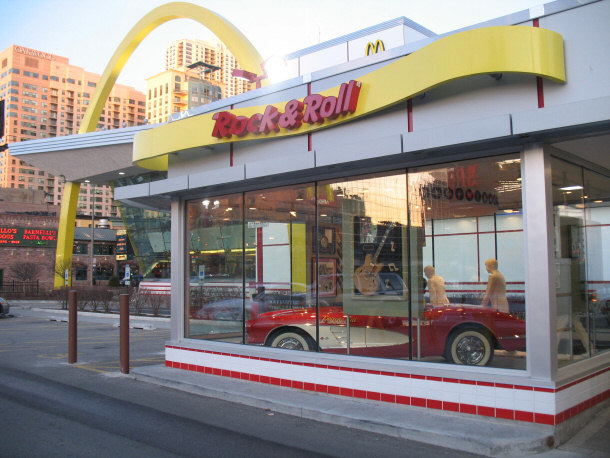
By TonyTheTiger
from Wikimedia Commons
By pairing up two very "American" ideals, Rock & Roll and capitalistic
consumerism as McDonald's has here, Americans can't help feeling drawn towards these low-quality food
serving, glorified food dispensaries. This location materializes all of the
metaphors and rhetoric that is pumped into all of the company's advertisements
and brand image efforts. The advertisements that fast food companies use are
also grossly inaccurate and portray their foods in an inaccurate fashion.
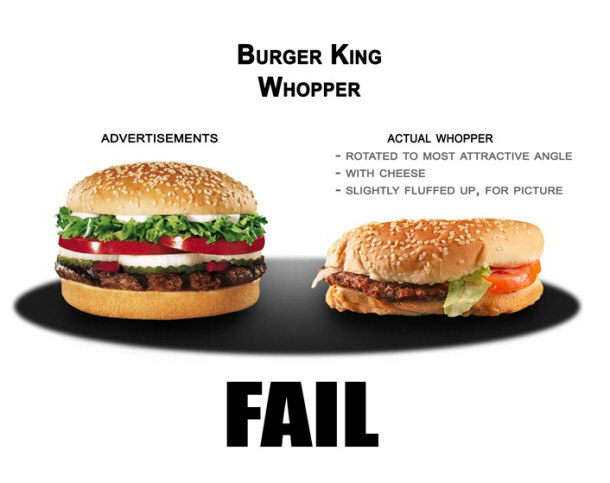
As ubiquitous and iconic as many of the
fast food chains have become, there are number of facts about the history of the fast
food industry that are little known and in a number of cases quite surprising.
15) A Cinema Manager Created Large Fries
The reason for large sizes in regards to fast food came about because of all
things a cinema manager. In 1967, David Wallerstein the then manager of the
Balaban cinema chain noticed that customers frequently bought multiple drinks
and bags of popcorn, which led Wallerstein to realized that there was demand for
larger sizes. Large fries are such a common feature for a fast food chain that
every chain has their own version of French fries.
"Animal" Style from In-N-Out Burger Includes Cheese and
Grilled Onions
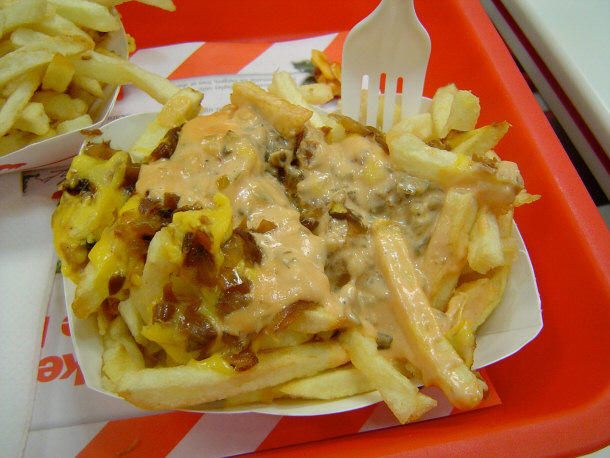
By Qfl247
via Wikimedia Commons
The idea was an immediate success, with the increased sizes selling for more
than the multiple purchases would have ultimately amounted to. The McDonald’s
company soon noticed this genius ploy and hired Wallerstein. This resulted in the
first line of large sized French fries available in a major fast food chain.
The large sized French fries were an immediate success, with people snapping
them up immediately upon release as they believed the product was a great value.
The large size was so successful that other fast food chains quickly copied the
idea.
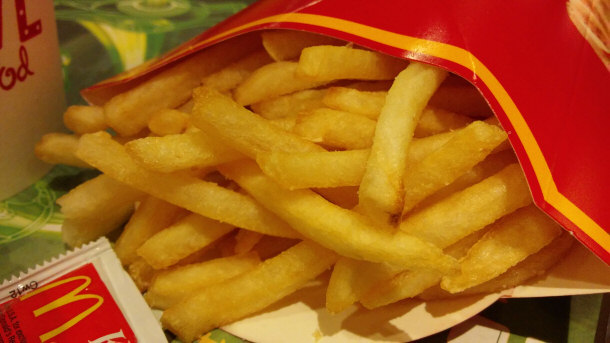
By TeaLaiumens
via Wikimedia Commons
Ironically, McDonald’s boss Ray Kroc was initially against the idea of
introducing a larger size of French fries, as he was concerned about the health
repercussions given that he felt that it would be far too much food for one
person to consume. Presumably, he then realized that there was far too much
money to be made by going ahead with the brilliant idea.
14) Jurassic Park Created Super Size
McDonald’s controversial Super Size was first introduced in 1993, as part of
a promotional gimmick for the film ‘Jurassic Park’ (1993). They were first known
as "Dino Size". The super sizes applied to the drinks and fries and they were an
immediate success, so much so that McDonald’s kept the items on their menu after
the promotion had ended.
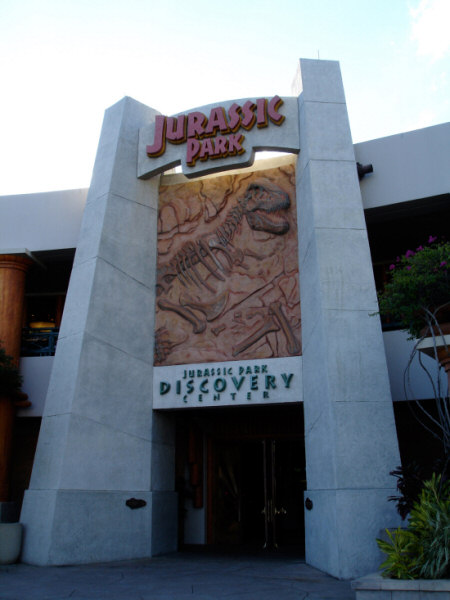
By Daryl Mitchell
via Wikimedia Commons
While the super size option never lost its popularity, the McDonald’s company
was forced to for the most part phase out the super size option from 2004
onwards after receiving extremely bad publicity for health groups. The super
size was received extensive criticism following the release of the film ‘Super
Size Me’ (.....) in which filmmaker Morgan Spurlock ate nothing but McDonald’s
for a month and became quite sick.

By Melesse
via Wikimedia Commons
Still, the super size option hasn’t been completely removed from all
McDonald’s menus, with the option still available in some McDonald’s in England.
13) Taco Bell Can’t Break Into the Mexican Market
For much of the world, the Taco Bell chain epitomizes Mexican food. In
reality, it’s far from it, so much so that the business has never been able to
break into the Mexican market. There is a great deal of irony with Taco Bell's
Live Mas campaign whose literal translation means to live more.
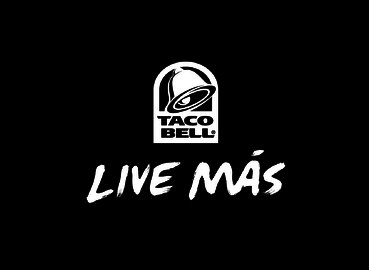
By Huon
via Wikimedia Commons
Perhaps the biggest reason for this is that, despite the myth that has been
largely propagated by Taco Bell’s menus, very few traditional Mexican dishes
have ground beef in them, unlike most of the dishes available from Taco Bell.
Chicken is also rarely used. The hard taco shell, which non-Mexican individuals
typically associate with Mexican food, has nothing to do with Mexico.
Taco Bell in Revere, Massachusetts
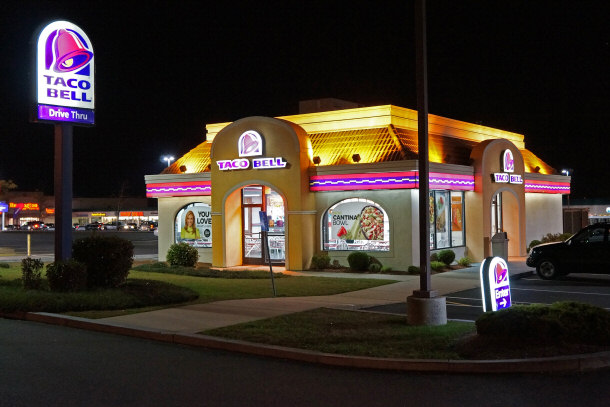
By Anthony92931
via Wikimedia Commons
In short, Taco Bell isn’t actually Mexican food, which explains why, while
Taco Bell’s competitors like Dominos Pizza and McDonald’s are phenomenally
successful in Mexico, Taco Bell has twice failed in their attempts. This was
even after they tried re-branding themselves and their product by labeling their
food as “American Food” instead of Mexican.
12) Subway is the World’s Biggest Fast Food Chain
McDonald’s certainly had a good run as the world’s biggest fast food chain.
They were the forerunner for almost everything when it came to fast food
restaurants and all the various initiative to the industry over the years. But
at the end 2010 the Securities and Exchange Commission announced that Subway had
more restaurants globally than McDonald’s.
Subway Located in Shanghai
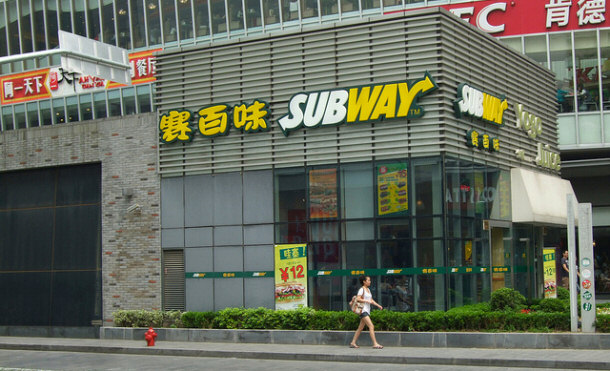
It wasn’t by much (there were only 12 more Subway stores than McDonald’s, in
fact) but the reality is that Subway is bigger. And it has since kept growing.
This shift in success came about in part because of the growth of the Subway
business throughout Asia.
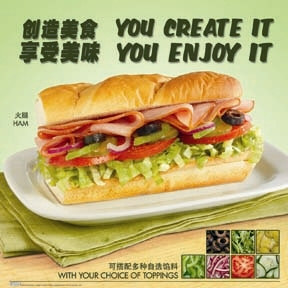
More significantly, though, the success was due to
Subway’s emphasis on its healthier menu, with the ever increasing focus on
healthier options in the fast food market in the last decade.
11) Fast Food Architecture Used to Ruin Communities
Fast food restaurants are known for their distinct designs. They are built to
specifically stand out from the rest of area in which they are located, much to
the annoyance of residents nearby. The need for flamboyancy in fast food
architecture came about because of the success of cars and when fast food
companies began offering customers the opportunity to use a drive thru service
to grab a meal on their travels.
Arby's Located in Middle Village, Queens, New York
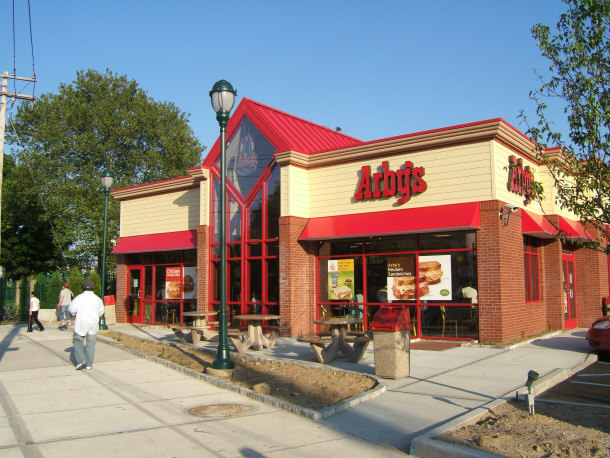
By Jcerulli
via Wikimedia Commons
Initially, when fast food first started there weren’t as many cars on the
road so design of the restaurants wasn’t too important. Soon, though, more and
more people were on the road. By then there were a number of fast food
restaurants all competing for motorist’s attention.
First McDonalds San Bernardino, CA
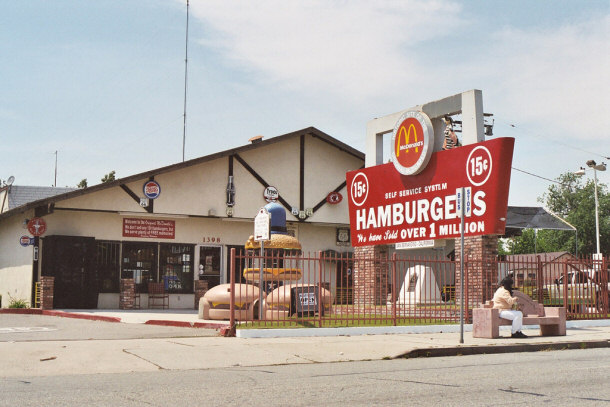
By Cogart Strangehill
via Wikimedia Commons
As a result, businesses had to design what was often very ostentatious (and
very ugly) architecture, complete with loud and annoying sound music and/or
sound effects in order to grab a potential customer’s attention.
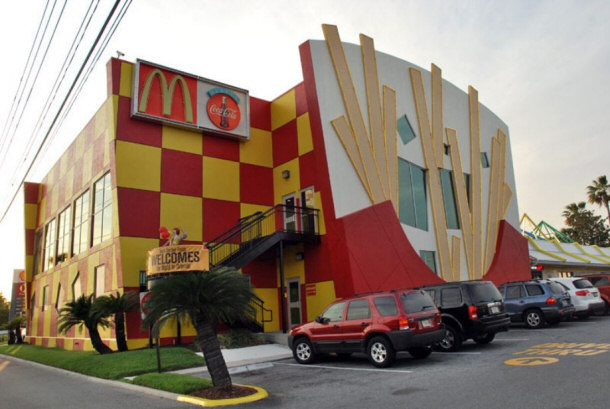
It wasn’t until the 1970s that communities came together and protested in
regards to the over the top designs that ruined the aesthetic of their
respective towns.
10) The Oldest McDonald’s and Taco Bell Are in the Same Town
In 1962, the original Taco Bell restaurant was established by Glen Bell in
the town of Downey, California. While it was originally opened in 1953 and is
technically the third McDonald’s store to ever open, the town also happens to be
the location of the oldest McDonald’s restaurant. Though it was not the first
McDonald’s, it is the only surviving store of the original McDonald’s chain.
Oldest Operating McDonald's Restaurant in Downey, Southern CA
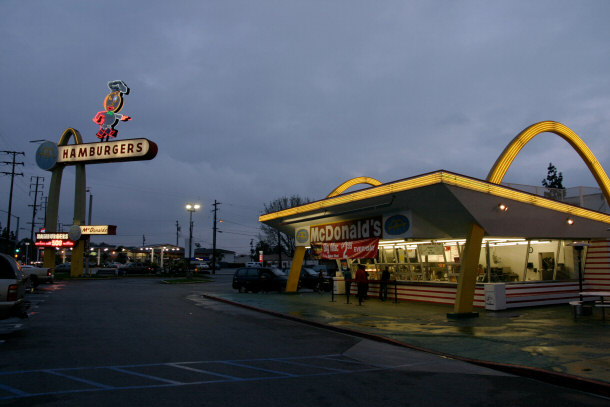
By Bryan Hong
via Wikimedia Commons
Strangely, although Taco Bell had gone out of their way to ensure that the
significance of their store wasn’t forgotten, McDonald’s originally let their
store fall into disrepute, despite its historic significance.
Original Design for Taco Bell Restaurants
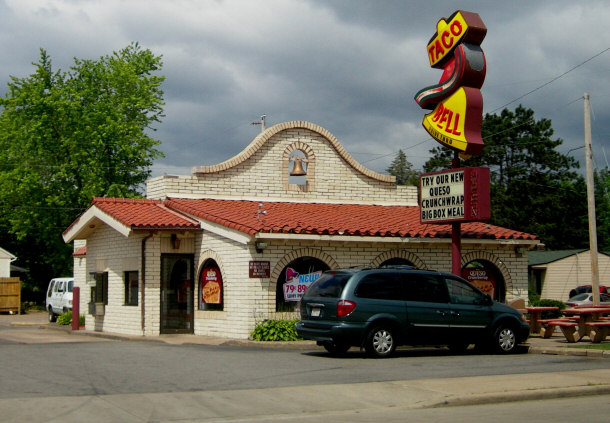
By Jonrev
from Wikimedia Commons
The store was
closed in 1994, due to its significant lack of facilities – it lacked both
indoor seating and a drive-thru window and the location had sustained
considerable damage from an earthquake.
Taco Bell's New Store Design as of 2013
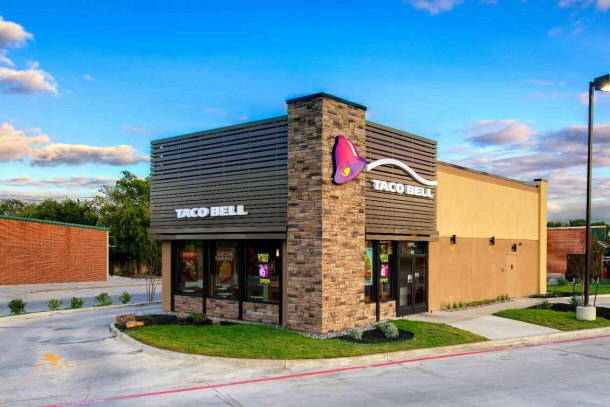
By Sphilbrick
via Wikimedia Commons
It was only after local residents and McDonald’s customers complained about
the lack of respect shown to the historically significant store that something
was done to improve the location’s conditions. Ultimately, their customers’
complaints led to the McDonald’s company taking two years to restore the site.
9) Hamburger and Fries Was Intended to Replace the Meal of Meat and Potatoes
The coupling of a hamburger with French fires is a staple of the fast food
industry. As iconic and seemingly obvious as the paring seems nowadays, it might
surprise some to know that the original fast food chains typically only sold
hamburger and drinks.
Hamburger and Fries American Diner Style
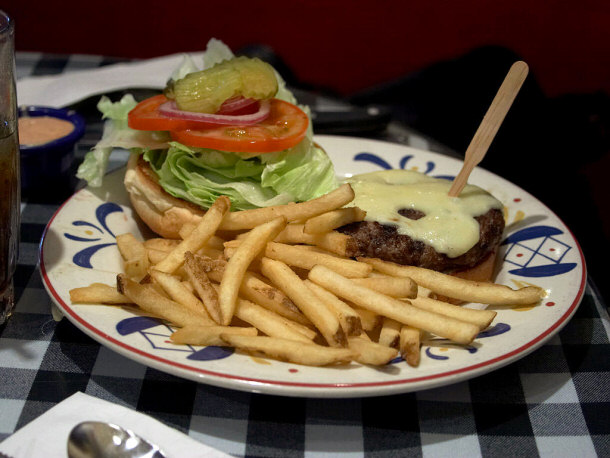
Fast food restaurants didn’t think to throw French fires into the mix until
fast food companies noticed that people were eating hamburgers in place of a
complete meal – not merely a snack as the businesses had originally assumed.
Thus, the idea came about to provide people with a fast food meal of a
hamburger, French fries and a drink.
No. 2 Meal from Crown Burger Plus in Denver, Colorado
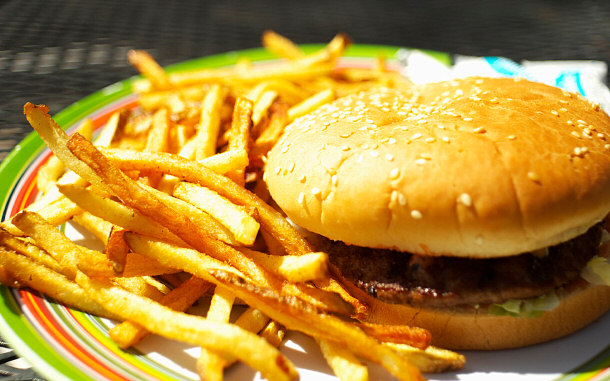
By Max Slowik
via Wikimedia Commons
The logic to add the French fries came from the traditional idea of a meal
being a simple combination of meat and potatoes, which had been a principle for
a basic meal in America since the 1700s.
8) French Fries, Not Hamburgers, Are the Most Popular Fast Food
Traditionally, the symbol for fast food is a hamburger. After all, it was the
selling of hamburgers that got the industry of fast food started in the first
place. Despite appearances, though, the hamburger is not the most popular fast
food in America. French fries are.
McDonald's French Fries
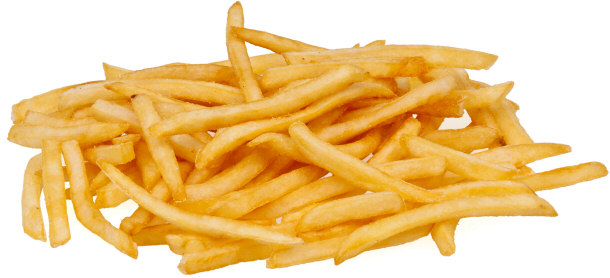
It’s hard to say just when French fries surpassed hamburgers as the preferred
fast food by most Americans, but it was probably around the 1970s, when larger
sizes of French fries were introduced and customers immediately started buying
up big.
Five Guys Meal Complete With of Course, French Fries
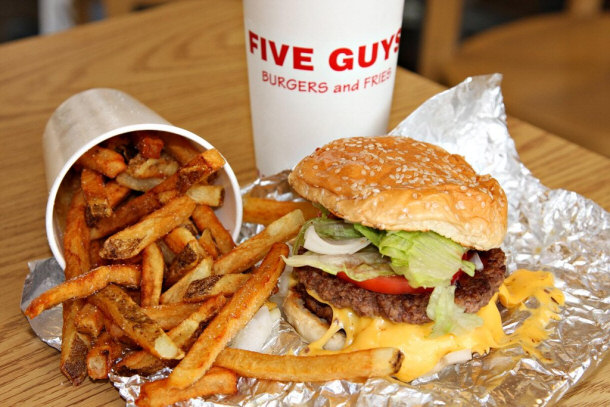
During the course of 2004, Americans consumed around 7.5 billion pounds
of French fries.
7) High Fructose Corn Syrup is Key to Fast Food
The year of 1967 saw the fast food industry revolutionized, with the
introduction of high-fructose corn syrup. It’s a sugary substitute that works by
tricking a person’s body into both wanting to consume more junk food but also
into storing fat.
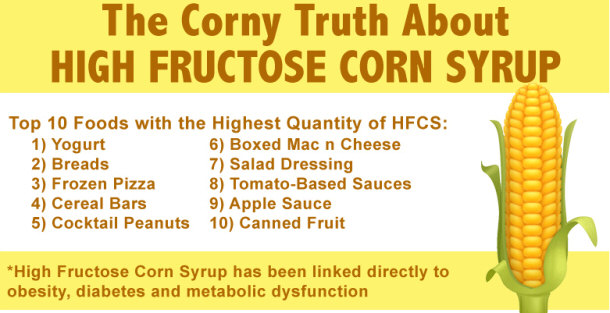
On average the typical American consumes around 63 pounds of high-fructose
corn syrup annually. Since its introduction it was been used in pretty much any
and all forms of fast food – even fast food that seems to offer a healthier
alternative to the other obviously unhealthy food that is predominately sold by
most fast food chains.
Developing High Fructose Corn Syrup

6) Ronald McDonald Wasn’t McDonald’s Original Mascot
Nowadays, there’s debate as to whether the McDonald’s company really needs
their long time mascot Ronald McDonald anymore, but what’s undeniable is that
Ronald certainly had a massive impact in his heyday. In fact in 2005, Ronald
came in second in the ‘Advertising Age’ magazine’s poll of the world’s best
advertising icons from the 20th century – he was second only to the Marlboro
Man.
Ronald McDonald
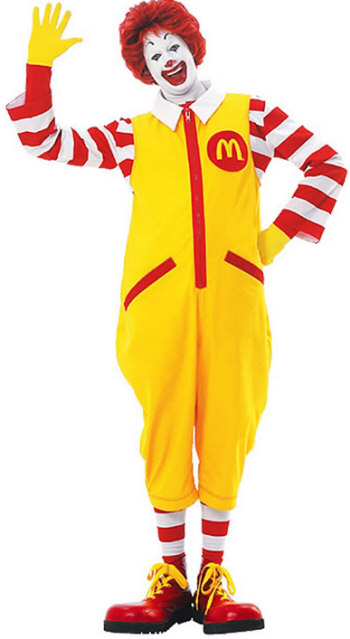
In the mid 2000s, studies found that 96% of children recognize Ronald
throughout America. As iconic and successful as Ronald was for McDonald’s, he
was not the company’s first mascot. McDonald’s very first mascot was named
“Speedee” – a chef with a hamburger-like face.
McDonald's Sign Showcasing "Speedee"
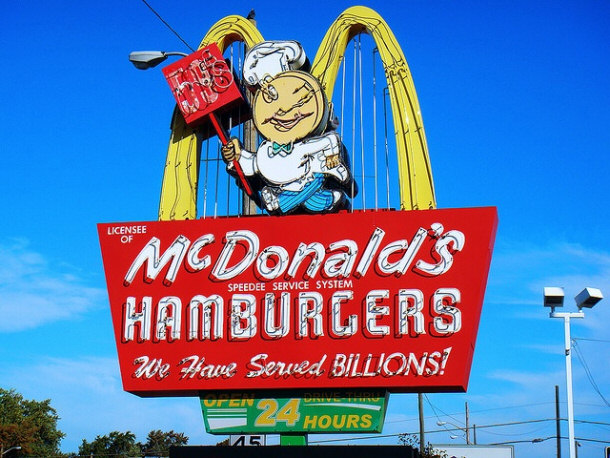
He was somewhat popular, but was
ultimately replaced in 1967 by Ronald McDonald.
5) The Founder of Wendy’s Made KFC a Success
Dave Thomas was the co-founder of the fast food chain Wendy’s. He established
the business in 1969. Thomas began his work in the food industry when he was
just 15. He took a job at friend’s father’s restaurant. After establishing
himself as a solid worker over a number of years, he was offered a job at KFC.
He took the position, which involved overseeing four separate stores.
Dave Thomas
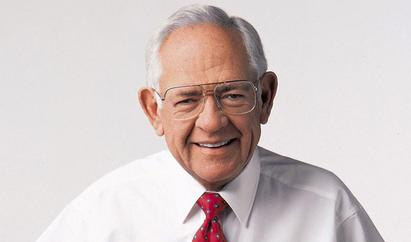
By Theo's Little Bot
via Wikimedia Commons
While at KFC, Thomas had the idea to introduce coupons and a number of deals
to get more customers through the door, which worked brilliantly. He later
personally advised KFC’s founder Colonel Harland Sanders. Thomas told Sanders
that he should reduce the amount of items on the menu, focus of a signature
dish, produce a distinct bucket for his products and appear in the company’s ads
himself. Sanders followed Thomas’ advice and thus gained greater success than
the company had previously experienced.
Colonel Harland Sanders in the 1970s Signing Autographs

By Edgy01
via Wikimedia Commons
Having proved himself a solid businessman, Thomas left KFC and established
Wendy’s. He opted to focus on hamburgers as he couldn’t find a decent burger
near where he lived. He named the company after his 8 year old daughter. The
company is one of the biggest fast food chains in America.
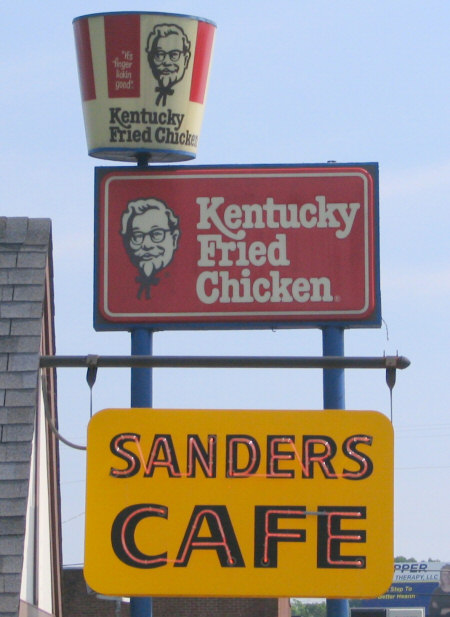
By Brent Moore
via Wikimedia Commons
Still, the company
has never enjoyed the success on both a national and international scale as KFC,
who owe much of their success to Thomas’ advice.
4) McDonald’s Didn’t Want People Eating In their Restaurants
Love or hate McDonald’s, you’ve got to admit that they know their business.
Throughout the company’s history, they have made a number of groundbreaking
decisions that have revolutionized the fast food industry and the business world
in general. Not all their decisions were brilliant, though.
Ray Kroc's First and Opened in 1955 Converted to a
Museum, Des Plaines, Illinois

By Bruce Marlin
via Wikimedia Commons
Perhaps the most astoundingly bad decision the McDonald’s company ever made
in their history was that they initially didn’t like the idea of their customers
sitting inside their stores to eat their meals – thus, while McDonald’s allowed
for customers to eat in their restaurants, they intentionally made the stores
quite uncomfortable. Specifically, the furniture in their restaurants was
purposely built so that people wouldn’t want to use it for an extended period of
time.
McDonald's in Hong Kong
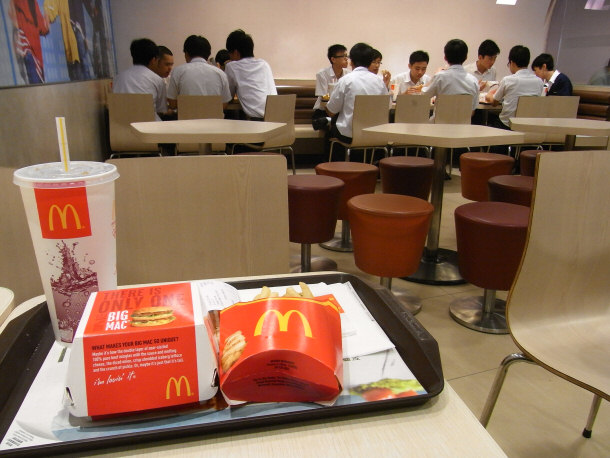
By Ka Ho Fa Yuen
via Wikimedia Commons
The logic was that McDonald’s didn’t want people taking up space for other
customers as they might deter people from even coming in if they saw a large
number of people eating inside. The company soon realized that the longer people
stay the greater chance there is that they’ll buy more food and ultimately
changed their stores’ designs to make them more appealing.
3) The Success of Fast Food Fundamentally Changed the Food Industry
The impact of the success of the fast food industry as a whole has been far
reaching, but while much of the impact in a commercial and cultural sense is
blatantly obvious, other changes the industry has caused go largely unnoticed.
This is especially true in regards to food production.
Fast Food Causes Increases in Corn Demand
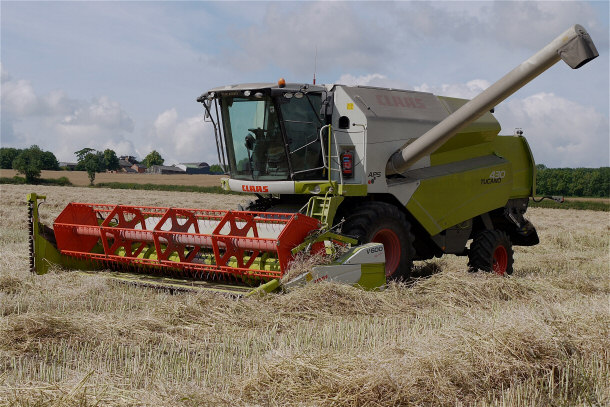
By Mick
via Wikimedia Commons
With the high demand for certain types of food – particularly meat products –
the food industry has had to significantly alter the way animals are bred,
raised, killed and processed, thus resulting in factory farming as we know it.
The impact has been felt on fresh produce growers.
Murray Grey Cows and Calves Used in Beef Production
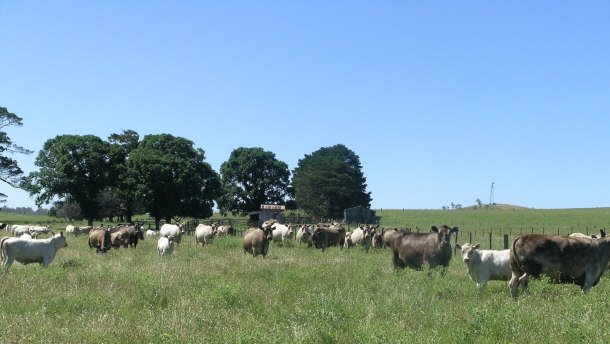
By Cgoodwin
via Wikimedia Commons
The McDonald’s company has had the biggest impact, as the company is the
largest purchaser of pork and beef and the second biggest purchaser of chicken.
McDonald’s are also the largest purchaser of potatoes. Their demand for the
products has forced the industry to alter the way food is manufactured
throughout the world.
2) Chinese Food is More Popular Than Fast Food
As popular as fast food chains there are still more Chinese restaurants
throughout America than there are fast food chains combined. Chinese food first
arrived in the U.S. in the 1800s, long before fast food existed, when immigrants
moved from China in search of new opportunities.
Most Chinese immigrants encountered a significant deal of racism and were
forced to establish their own communities, which led to the development of
“Chinatowns” throughout the country.
China Town Main Plaza, Los Angeles, CA
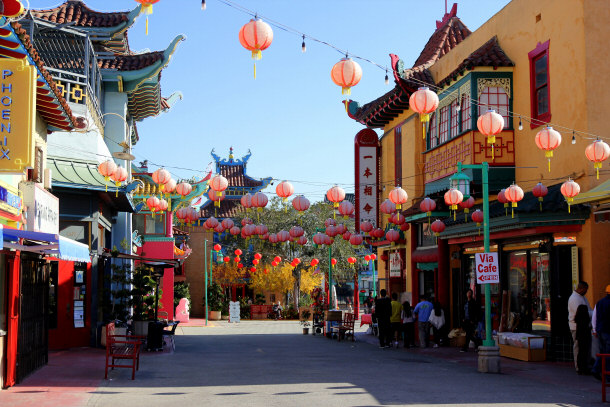
By Sgerbic
via Wikimedia Commons
Food production was one of the easiest ways for these immigrants to make
money, as they modified their traditional cuisines for an American market. As a
result, iconic dishes that non-Chinese Americans associate with Chinese food
were invented. These include the dishes like Crab Rangoon and Chop Suey, along
with the iconic fortune cookie – all of which still rivals the seemingly
incomparable success of fast food.
Garlic Chicken and Peapods Chop Suey With Fried Rice

By Eli Hodapp
via Wikimedia Commons
1) There Is Now a Hamburger Stand Where Thomas Jefferson Wrote the
Declaration of Independence
There is perhaps no greater document in the history of America than the
Declaration of Independence. Thomas Jefferson penned the Declaration in the
Graff House in Philadelphia. Despite the profound historical significance of the
location, the building was demolished in 1884. A bank was then built on the
area.
Graff House Philadelphia, PA
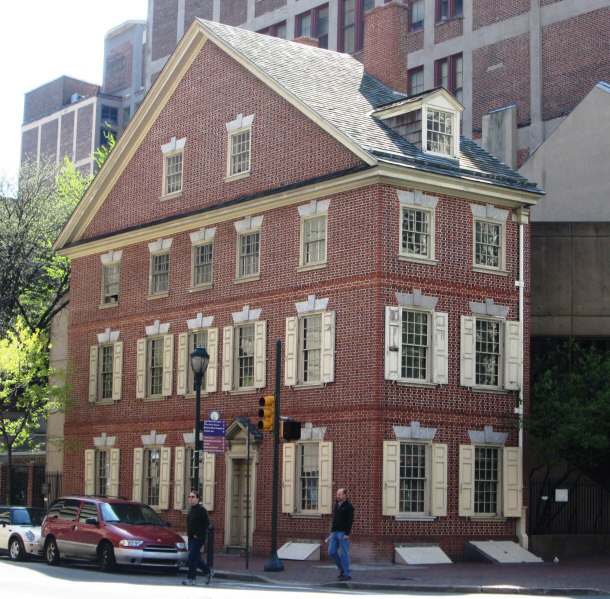
By Beyond My Ken
via Wikimedia Commons
During the 20th century, the bank was also demolished. The location
eventually had another establishment erected in its place – of all things, it
was hamburger stand. All there is to indicate the historical significance of the
location is a humble historical marker, detailing that it was the area where one
of the most important events in the history of America happened to take place.
Conclusion
Recent concerns facing the fast food industry have to do with ingredient
transparency. Consumers have indicated time and again that they really do want
to know all of the ingredients that go into their most favorite convenient creations.
Traditionally, fast food chain's lion's share of profits are derived directly
from cost-cutting measures concerning the ingredients they purchase. As
customers are beginning to shift back towards being very concerned with what
they consume, it will be interesting to see how global fast food giants will
adapt to the attitudes and behaviors of their targeted consumers. Will there be
substantial profit losses? Will companies like McDonald's all of a sudden find
themselves in financial jeopardy as they attempt to compete with companies like
Chipotle who have made it their corporate mandate to be nutritionally
responsible? The ability for fast food giants to adapt will be central to their
long-term success and future popularity.
General Food
15 Little Known Facts About McDonald’s
15 Surprising Facts About the History of Fast Food
15 Fascinating Facts about Mushrooms
Top 10 Must-Try Foods of France
Top 15 Foods of the Future
15 Fascinating Facts in the World of Cheese
15 Little Known Facts in the World of Cotton Candy
15 Interesting Facts About Burgers
19 Ridiculous Food Challenges Around the World
15 Unusual Things People Around the World Eat
10 Enthralling Facts about the World of Gourmet |